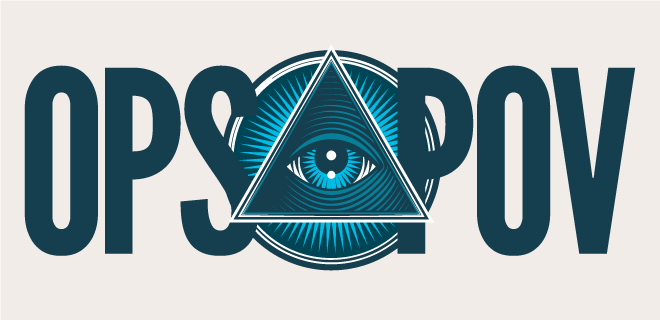
As antitrust rulings push Google’s ad tech empire toward structural change, advertisers and publishers must prepare for a more competitive, diversified programmatic landscape.
The digital advertising world is stepping into uncharted territory. For over a decade, Google has been the gravitational center of programmatic advertising, dominating search, ad serving, analytics and measurement. But recent DOJ court rulings mark the end of Google’s unchallenged dominance, moving into a penalty phase focused on remedies for its illegal monopoly in digital advertising.
A core issue is Google’s control over AdX, its ad exchange platform, critical to how publishers monetize and how brands buy media. The DOJ is demanding that Google divest AdX and open-source its auction technology, exposing the depth of Google’s control.
As we look toward 2026, advertisers and publishers must prepare for a fundamentally different landscape, one where competition returns and strategic diversification becomes essential.
The Regulatory Catalyst
While Judge Mehta’s recent ruling in the search monopoly case stopped short of mandating a breakup, the decision requires Google to open its search data to competitors—a move that could reshape market dynamics across the entire ad tech ecosystem. Meanwhile, Judge Brinkema’s ongoing deliberations in the ad tech antitrust case suggest that more significant structural changes may be on the horizon.
The implications extend far beyond courtroom battles. They signal a shift toward a more open and competitive marketplace. By granting rivals access to Google’s search information and user interaction data, competitors can improve search result relevancy, particularly for long-tail queries and niche audiences. For advertisers, this opens doors to new inventory sources beyond Google’s walled garden, potentially with more attractive pricing.
Market Dynamics in Flux
The immediate impact on advertisers will be indirect but significant. As competitors gain access to better data and improve their offerings, we can expect to see more efficient cost per mille (CPM) and cheaper cost per click (CPC) on emerging platforms, especially in the early stages as they work to build advertiser trust and market share. This creates a window of opportunity for early movers willing to test and validate new channels before they become saturated.
For publishers, the outlook is cautiously optimistic. While some fear disruption, the DOJ’s proposed breakup is likely the least disruptive path forward. The burden of change would fall primarily on Google and any new owners of its divested assets, not on publishers who already manage multiple exchanges and ad servers. What publishers and advertisers need most is a level playing field where alternatives to Google can compete fairly.
Testimonies from ad exchange CEOs during the remedies phase reveal deep frustration with Google’s grip over both the buy and sell sides of programmatic transactions. Whether through behavioral remedies or structural divestitures, this transition will bring both operational challenges and new opportunities for innovation and competition.
Strategic Imperatives for Advertisers
Advertisers who adapt early will be better positioned to thrive in this new environment.
Here’s what that should look like:
- Rethink Your Data Strategy: Look beyond Google-powered identifiers and audience segments. Explore new data partners that can offer scalable, search-based behavioral signals for both prospecting and retargeting.
- Diversify Ad Spend Intelligently: The DOJ seeks remedies, including divesting AdX and open-sourcing Google’s ad server logic. If implemented, this will drive more competition, creating new programmatic opportunities outside Google’s ecosystem. Test these channels systematically, measuring performance against your existing benchmarks. This potential shift away from Google’s dominance means early adopters could benefit from better rates and improved transparency.
- Prioritize Independence in Measurement: One of the industry’s long-standing frustrations has been Google’s black-box approach to auction logic and ad-decisioning. Invest in independent attribution and measurement solutions that aren’t tied to any single platform’s self-reported metrics.
- Build for a Multi-Platform Future: Design campaigns with platform flexibility in mind, ensuring your creative, data and measurement infrastructure can work across a diverse ecosystem of supply sources. Google warns that these changes could bring technical challenges and short-term disruption. Build contingency plans and maintain operational agility through this transition.
Beyond Regulation: Converging Trends
While regulatory action is the most immediate catalyst for change, it’s converging with other powerful trends reshaping programmatic advertising. Advancements in AI are changing how ads are created, targeted and optimized.
New privacy initiatives continue to limit traditional tracking methods. Consumer behaviors, especially around search and content discovery, are evolving rapidly, as AI-powered platforms like ChatGPT and Perplexity gain traction.
The Path Forward
The future advertising landscape will likely be marked by increased competition and significant shifts in how programmatic advertising operates. The DOJ’s push to open-source Google’s ad server logic and divest AdX threatens to dismantle Google’s long-standing control, paving the way for a more competitive ecosystem.
The era of Google’s ad tech monopoly is ending, not overnight but unmistakably. The winners in the next chapter will be those who anticipated this shift, diversified early and built strategies resilient enough to thrive in a truly competitive ecosystem.